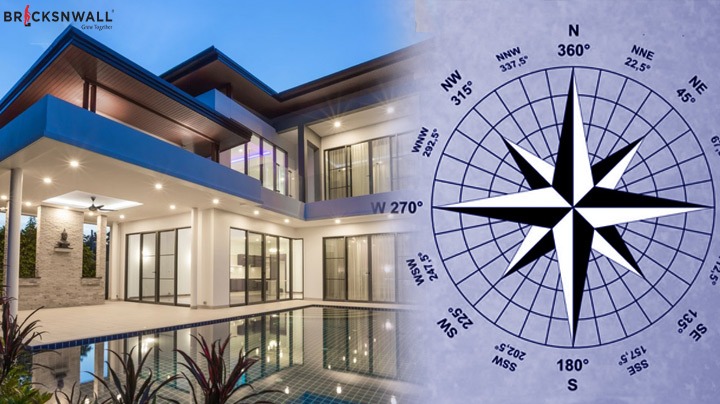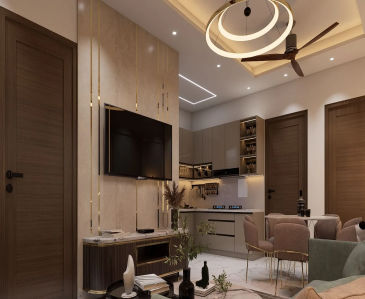How to Determine the Right Directions for Home as per Vastu?
Bricksnwall Trusted Experts

Determining the right directions for your home is
interesting. Especially according to Vastu can be an interesting and important
task. It is said to be an old Indian architectural science. The same focuses on
harmonizing the energy flow in a living space.
Here we will explain the key directions and their
significance in Vastu. The same will be done in a simple and easy-to-understand
manner.
East (Poorva):
The east direction is super important in Vastu Shastra! It's the
direction where the sun rises and brings positive energy to our homes. In
Vastu, it's considered very lucky and connected to new beginnings. That's why
experts say the main entrance of our house should face east. By doing that, we
can welcome the good vibes and the bright morning sunlight. So, when planning a
house, we need to remember the east direction and make sure our main door is
pointing that way. It's like inviting good luck and happiness into our homes!
West (Paschim):
The direction of the setting sun is known as the
west direction. It is generally advised to have heavy structures, such
as:
1.
Wall or
2.
Storage cabinets, in the west to provide support to
the building. It symbolizes the elements such as stability and strength.
North (Uttar):
The direction opposite to the south is called the
north direction. In Vastu, the north is considered the direction of prosperity
and wealth. It is believed that having openings like:
1.
Windows or
2.
Balconies in the north bring good fortune and
abundance.
South (Dakshin):
The direction opposite to the north is known as the
south direction. South is associated with fire energy. The same is considered
suitable for placing the kitchen. Or it can be any other heat-generating
equipment. However, the master bedroom should ideally be located in the
southwest corner.
Northeast (Ishanya):
The corner formed by the intersection of the
directions is the northeast corner. It is considered the most sacred and
auspicious corner in Vastu. The northeast corner is associated with
spirituality and enlightenment. It is ideal for placing a puja room or
meditation area.
Northwest (Vayavya):
The corner formed by the intersection of the said
directions is the northwest corner. This direction is associated with air energy.
The same is considered suitable for placing guest rooms or living rooms. It is
also a good direction for storing important documents.
Southeast (Agneya):
The corner formed by the intersection of the south
and east directions is called the southeast corner. It is associated with fire
energy and is considered ideal for placing the kitchen. Cooking in the
southeast direction is believed to enhance the positive energy in food.
Southwest (Nairuthi):
The corner formed by the intersection of the south
and west directions is known as the southwest corner. It is considered the most
stable and powerful corner in Vastu. The master bedroom or the head of the
family's room is recommended to be in this corner for stability and good
health.
Remember, Vastu is a guide to creating harmony in
your living space, but it is not a rigid set of rules. You can always adapt and
make adjustments based on the layout of your home and your personal
preferences.
To determine the directions in your home, you can
use a compass. Stand at the centre of your house and hold the compass. The
needle will point to the north, helping you identify the other directions. You
can then plan the placement of rooms, furniture, and other elements
accordingly.
In conclusion, understanding the right directions for your home according to Vastu can help create a balanced and harmonious living environment. By considering the significance of each direction, you can make informed decisions about the placement of different rooms and elements in your home.




